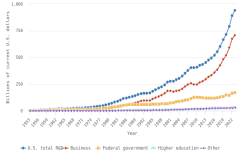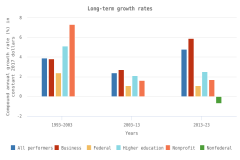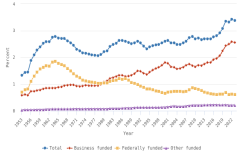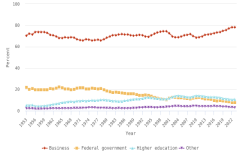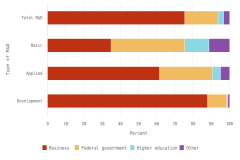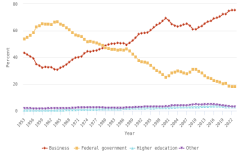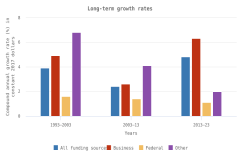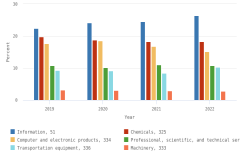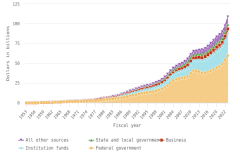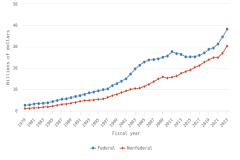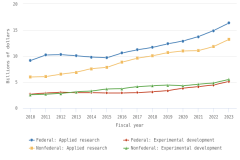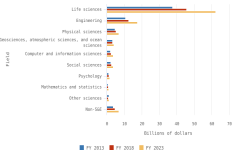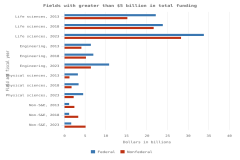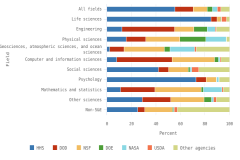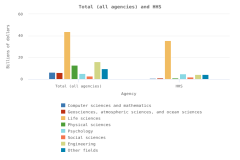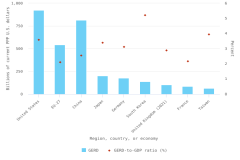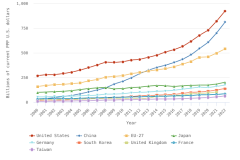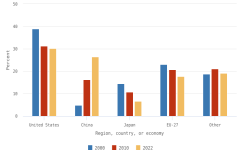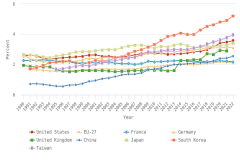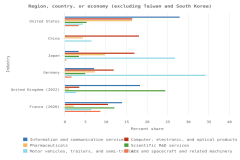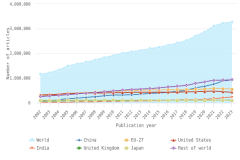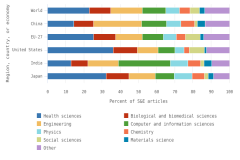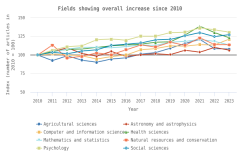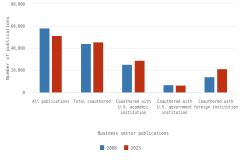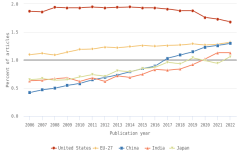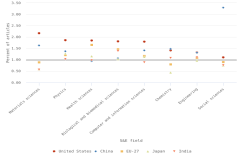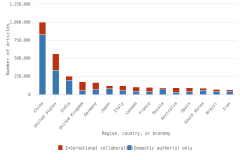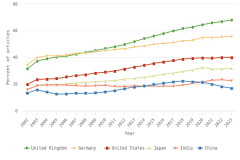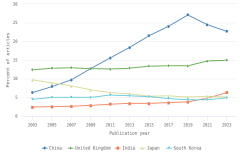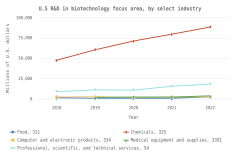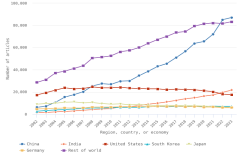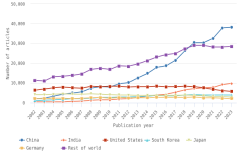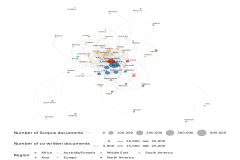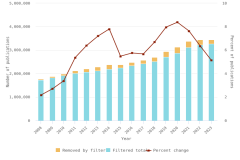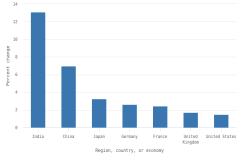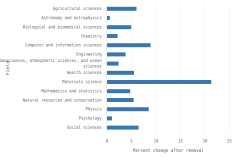Introduction
U.S. and international research and experimental development (R&D) and one of its early results, research publications output, are important indicators of the performance of the U.S. science and engineering (S&E) ecosystem in a global context. R&D contributes to economic output and productivity growth and supports national defense, cybersecurity, health, energy, physical infrastructure, environmental protection, and other national priorities (Baily, Bosworth, and Doshi 2020; Bloom et al. 2020; CRS 2020, 2023a; NASEM 2020). Research publications, in the form of peer-reviewed journal articles and conference proceedings, are important media for sharing scientific discoveries and contribute to a corpus of scientific knowledge that provides a foundation for future research and innovation.
R&D refers to creative and systematic work aimed at increasing the stock of knowledge and is broken down into three types of R&D: basic research, applied research, and experimental development (OECD 2015). R&D statistics are presented by major performing and funding sectors, by type of R&D, by intensity measures relative to gross domestic product (GDP) across economies, and by S&E fields. U.S. R&D data in this report are from the National Center for Science and Engineering Statistics (NCSES), U.S. National Science Foundation (NSF), including the National Patterns of R&D Resources (henceforth, National Patterns) database (NCSES 2025d). The Organisation for Economic Co-operation and Development (OECD) Main Science and Technology Indicators (MSTI) and the Analytical Business Enterprise Research and Development (ANBERD) databases are the sources for international R&D statistics (OECD 2024a, 2024d). Dollar amounts are reported in current (nominal) terms unless otherwise noted. All years are calendar years unless otherwise noted.
Research outputs are the result of inputs (often measured as R&D expenditures or numbers of scientists and engineers) and of the productivity or process efficiency using these inputs across different technologies, industries, institutional context, and geographies (Bloom et al. 2020). Outputs and outcomes include research publications as well as patents, licenses, products, and the formation of firms such as technology startups later in the innovation process (Ahmadpoor and Jones 2017; Aksnes et al. 2017; Kolev et al. 2022). Analyses of publication output covered in this report are indicators of research partnerships and scientific activity by location, sector, and field. Citation analysis and related research on diffusion and knowledge spillovers may be used to identify key linkages between public and private R&D, scientific output, and socioeconomic uses and impacts of R&D (Adams 1990; Akcigit, Hanley, and Serrano-Velarde 2021; Arora, Belenzon, and Sheer 2021; Arora et al. 2023; Crespi and Geuna 2005; Czarnitzki and Thorwarth 2012; Stephan 2012; Yin et al. 2022). Publications, citations, and scientific impact are analyzed in this report using bibliometric data from over 47 million English-language articles published from 2002 to 2023 using data from Scopus, a database of scientific literature with English-language titles and abstracts (Science-Metrix 2021a). Research output in the form of patents and other forms of intellectual property (IP) protection will be covered in a separate Science and Engineering Indicators 2026 report.
This report is the first Indicators 2026 thematic report covering indicators from inputs for knowledge creation to dissemination, the resulting inventions and products, and other outcomes. Future thematic reports will focus on “STEM Talent: Education, Training, and Workforce” (education, training, and employment of scientists, engineers, and skilled technical workers) and “Translation to Impact: U.S. and Global Science, Technology, and Innovation Output” (IP trends, patent citations of scientific publications, and other measures of spillovers or technology transfer, venture capital, production output, and international trade).
 An official website of the United States government
An official website of the United States government


